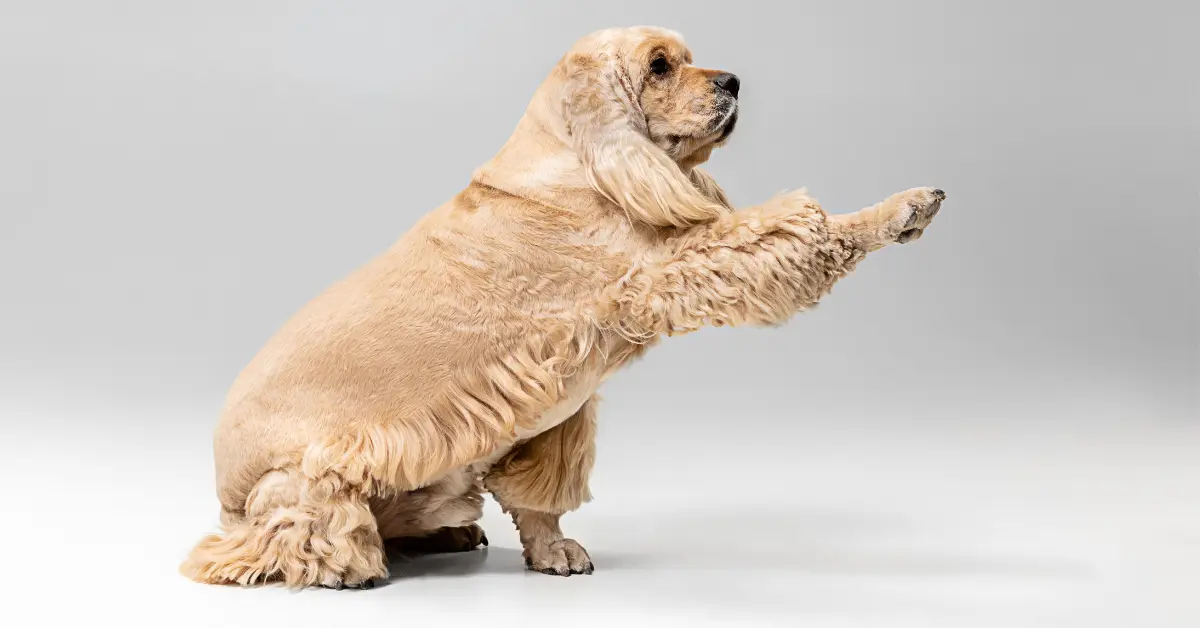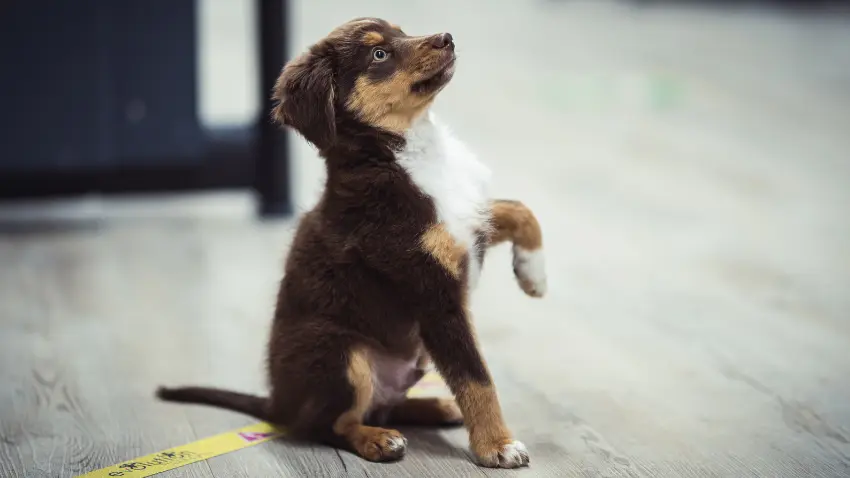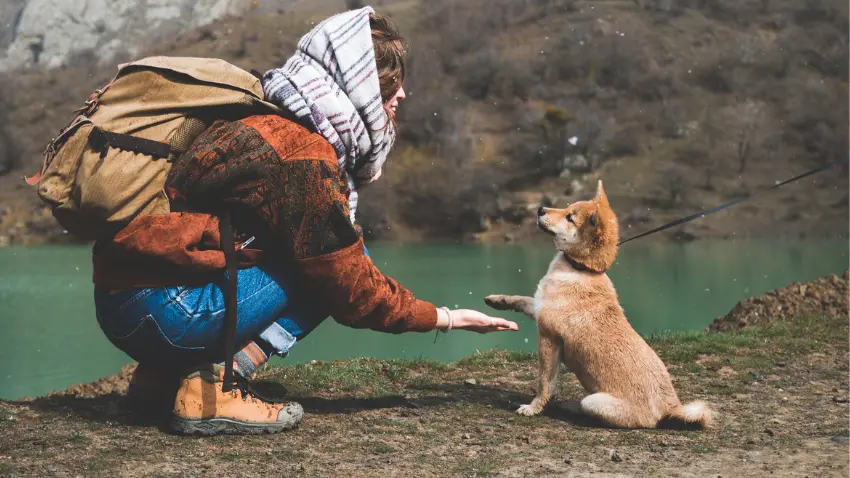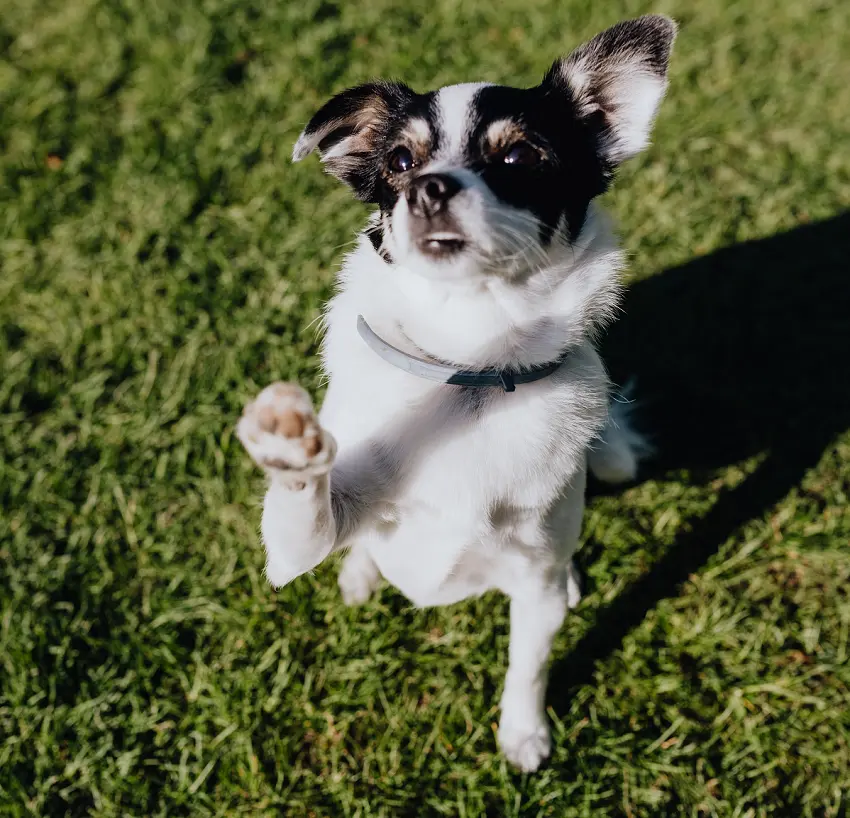Why Does My Dog Lift His Front Paw?
Dogs have unique body language, which largely involves their tails and paws. While pawing is a common habit, I can’t help but ask, why does my dog lift his front paw?
Lucky for my dog Sherlock, his habitual paw lifting is a sign of anticipation. We noticed that he does it whenever he sees food. He also started doing it after we trained him to shake. If you like teaching new things to your dog, you can learn how to teach your dog to shake.

However, lifting of paw can have different meanings for each dog. For this post, I discussed the most common possibilities and whether it’s a cause of concern.
Why does my dog lift his front paw?

Anxiety and fear
Why does my dog lift his front paw? If may be because they are feeling afraid and anxious. Lifting its front paw in this situation is a sign of uncertainty. It’s important to reassure your dog that they are not in harm’s way.
If you just met the dog for the first time, lifting a front paw can mean that the canine doesn’t feel safe around you. The dog isn’t sure if he can trust you. It’s also accompanied by a tucked tail, whale eyes, lips that are drawn back as well as ears pinned down.
Stay calm and don’t try to approach or touch the dog just yet. You can use treats to lure the pooch so it can relax and bring its front paw down.
Encouraged behavior
Dogs are like sponges. They absorb whatever they see from us. For example, if you keep rewarding when the dog’s front paw is up, your pooch will keep doing it. The canine will think that it’s some kind of trick that you like them to do. Overall, this habit isn’t something to worry about.
Please read here: Why Does My Dog Wrap His Paws Around My Arm
Anticipation
A few months ago, we started noticing our Golden Retriever Sherlock lifting his paw every time there’s food around. It’s a form of anticipation since he’s a big eater. He also does the same paw lift whenever he smells treats and kibble. This means that your dog knows that something good or rewarding is about to happen.
Too focused
Focused paw lifting is highly observed in hunting dogs. The canine would lift its front paw once it’s ready to pounce or chase after a target. This is often accompanied by a tensed body and a laser-like stare at the prey.
If your dog’s focused paw lift is directed to you, it’s best to walk away as you might be targeted for a playful attack.
Injury
While the earlier reasons are harmless, another possibility you should consider is an injury. Dogs that lift their paws and limp often feel pain in the affected leg. This is accompanied by whimpering, reluctance to walk or run, and swelling on the paw.
Many dog breeds are active so paw injury is very common. It can be due to a pulled muscle, a wound, or a broken bone. Also, indoor canines that are walked during a hot afternoon will suffer from paw pad burns, which will cause them to lift it.
If your dog is suddenly lifting its paw and limping around, you should take a quick check on its paws. Be careful as many dogs in pain may snap and bite. You should also call the vet for proper medication.
To give you an idea, the most common causes of paw problems in dogs are burns, infections, nail issues, dry pads, and cuts. Cysts and growths can also be an issue.
Frequently Asked Questions
Why do dogs put their paw up when you pet them?

Why does my dog lift his front paw when I pet them? This could be a sign that your dog wants to pet you back. It wants to give the favor back to you as a form of affection. It’s possible that the doggo is also anticipating a hug from you.
Aside from that, your dog may want you to rub a spot near their leg. With that, raising the paw will encourage you to go further. You will also notice your dog wagging its tail and sporting a relaxed posture.
Why do dogs sit with one paw tucked under?
We often observe tucked paws with our cat Watson, but it’s only lately when Sherlock started doing it as well. According to the vet, this is a sign that Sherlock is relaxed in his environment.
Also, the elbow sticks out whenever the paw is tucked so it gives skeletal support to your dog’s sitting posture. In short, your pooch is comfortable in this position. It’s the same reason why we often sleep with one leg bent or why we cross our legs while sitting.
Why does my dog sit with one back leg up?
Adult dogs should have a normal sitting posture with a straight body and their knuckles flat on the ground. However, dogs can develop weird sitting positions. Most of them are harmless but others can indicate an issue.
Most of the time, dogs sit the way they do because they are comfortable. But if one back leg is sticking up, your pooch might be experiencing discomfort in the normal position. This could be due to hip dysplasia, leg injury, or wounded paws.
A quick check may reveal something about your dog’s condition. If the sitting posture lingers for no apparent reason, it’s worth calling the vet for your peace of mind.
Why does my dog eat with one paw up?
Why does my dog lift his front paw when eating? Most of the time, this is just a silly habit. If your pooch isn’t limping or raising its paws on different occasions, there’s nothing to be worried about.
Weird eating postures aren’t new to canines. When our Sherlock was just a few weeks old, he would be raising his butt as he eats. It’s funny but he soon outgrew it as his body became larger.
Why does my dog paw the air?

Pawing in the air can be your dog’s way of getting your attention. It means that the pooch wants something. Somehow, it’s a form of begging.
Again, pawing in the air can be a learned behavior. You probably toss treats or give pets whenever your dog does it. Overall, pawing is innate to dogs. Scratching the air isn’t usually a cause of concern.
Conclusion
Why does my dog lift his front paw? It can be due to innocent reasons like a form of habit, anticipation, or being too focused. Most of the time, occasional front paw lifting is usually harmless, there are cases where it may be necessary to seek professional help.
If your dog’s front paw lifting is accompanied by other concerning symptoms, such as limping, difficulty walking, or signs of pain, it’s important to have them evaluated by a veterinarian. Additionally, if the behavior becomes excessive, repetitive, or interferes with your dog’s daily activities, it may be beneficial to consult with a professional behaviorist or veterinary behaviorist.
